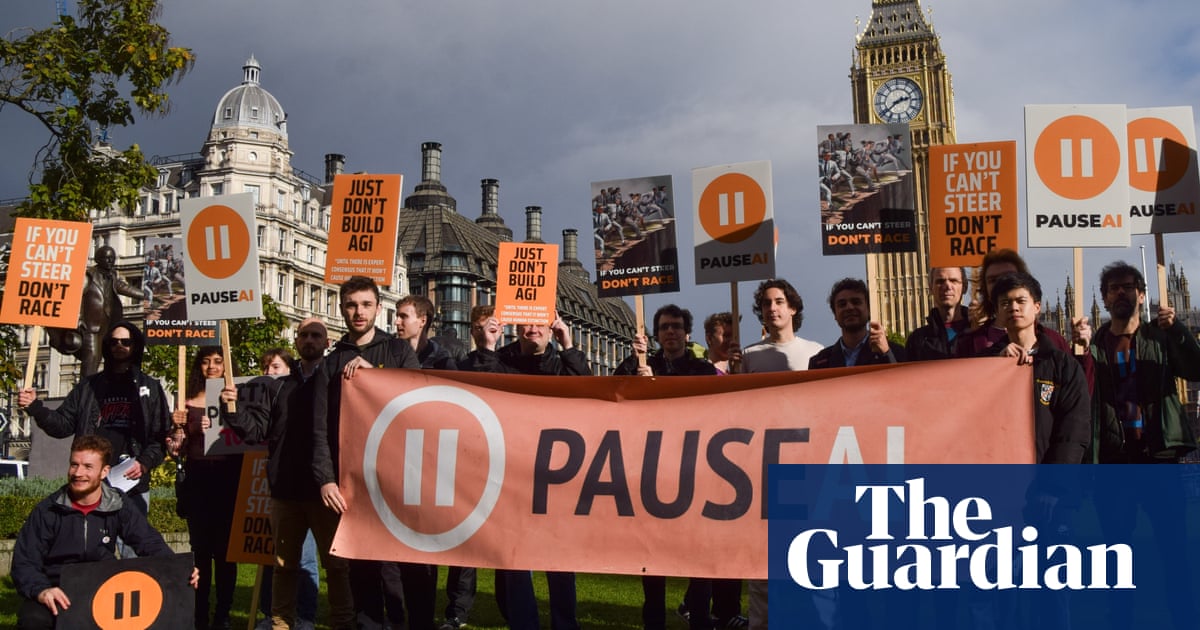Have we reached peak Trump? Is it possible that we have arrived at a moment, a mere four months into his second term, when the president’s capacity to do harm is diminishing?
That is undeniably a provocative question. Like any US president, Donald Trump remains immensely powerful. It is early days; he can still cause plenty of damage – and certainly will.
But after an initial flurry of activity when the opposition often seemed deer-in-the-headlights stunned, Trump’s power to daze and paralyze may now be on a downward trajectory. Recognizing that possible shift is important to embolden resistance to his dangerous, would-be autocratic rule.
Trump’s notorious flood-the-zone strategy was initially effective. Before opposition could be mobilized to one outrage, there was another. Entire government agencies were ordered shut. Government employees were dispatched by the tens of thousands. Healthcare, scientific and medical research, foreign aid, government-funded independent media, the quest for a more equitable society were all stopped or stymied.
Many of Trump’s actions followed the classic autocrat’s playbook as he deliberately attacked the checks and balances on his power. Republicans in Congress, prioritizing their own political future over the welfare of the nation, toed the line for fear of a primary challenge. Judges who ruled against him were subjected to intimidation and threats of impeachment. Law firms that sued him, or pursued cases he disliked, faced retaliation. Business leaders sidled up to him hoping to curry favor and avoid retaliation. Some journalists who criticized him were met with defamation suits or restrictions at White House briefings. Universities, as centers of independent thought, saw draconian funding cuts. Plans proceeded to remove the tax-exempt status of some private foundations and civic groups.
Trump made a mark in his first few months in part because the brazenness and velocity of his actions encouraged a save-yourself mentality among many targets. Some law firms, universities and media outlets struck deals with him, hoping to protect themselves at the expense of the rule of law, academic freedom or freedom of the media.
Yet over time, the resistance regrouped. More than 180 judges have ruled against some element of Trump’s program, from his summary dismissal of government employees to his efforts to deport immigrants without due process.
The courts were undoubtedly emboldened by Trump’s tendency to overreach. His senior aides and officials, often chosen for loyalty over competence, have shown little inclination to rein him in. The blatant unconstitutionality of Trump’s resulting actions – rejecting birthright citizenship despite its constitutional foundation, using the power of the government to retaliate against critics despite the first amendment – seem to have encouraged judges to abandon any presumptive deference to executive good faith. Many conservative lawyers are turning on him.
Because of Trump’s excesses, many of the setbacks have come even in the arena that was thought to be his strongest – immigration. The summary deportations of Venezuelan men to El Salvador’s nightmarish mega-prison, under the pretext of a nonexistent “war”, have been stopped. The Tufts University student threatened with deportation evidently because she co-authored an op-ed in a student newspaper that criticized Israel has been freed. So have other foreign students detained for similar pro-Palestinian views.
The former Columbia student and green card holder who led student protests against Israel is still in custody, but his case has highlighted the Trump administration’s absurd claim, needed to circumvent first amendment protection of non-citizens on US soil, that his actions undermined US foreign policy. About half of Americans believe his deportations have “gone too far”.
Trump’s disdain for the rule of law – his disparaging of judges who ruled against him, his refusal to conscientiously abide by judicial rulings – seems to have accomplished a remarkable transformation in the US supreme court, from a presumptive 6-3 majority in Trump’s favor to one that on occasion will rule against him, such as its pronouncement that immigrants cannot be deported without due process.
Many of the lower-court rulings are preliminary rather than decisions on the merits. Most are subject to appeal, and some have been reversed. But they have stymied many Trump initiatives. He has lost momentum.
Harvard, after unsuccessfully trying to placate Trump, responded to ensuing over-the-top demands by suing his administration. Seemingly recognizing that they had overplayed, Trump officials reportedly sought a settlement, evidently hoping to avoid an adverse judicial precedent, as has now occurred in several suits brought by law firms challenging unconstitutional retaliation against them. Trump has upped the ante against Harvard with huge cuts in government funding and a threat to its tax-exempt status, but the courts have at least temporarily stopped his effort to bar the university from enrolling foreign students.
Harvard’s belated, yet important, leadership – a stark contrast with Columbia’s unsuccessful appeasement – has galvanized other universities toward a collective defense. Law firms also have begun to band together, although many of the biggest ones still seem more concerned with preserving their considerable incomes than upholding their professional obligation to defend the rule of law. Private foundations are now consulting about how best to deter threats to their tax-exempt status.
Although public protests have been fewer than during Trump’s first presidential term, his public approval has plummeted. Elon Musk, once seemingly omnipresent as a Trump hatchet man, has retreated as people turn on Tesla and his other companies.
Trump’s foreign policy, a domain where presidential latitude is broad, has done no better at forcing acquiescence. Trump’s erratic and arbitrary tariff policies have managed to shake consumer confidence and threaten inflation while slowing the economy and panicking the bond market.
Trump’s instinct to trust Putin not to use a ceasefire to rearm and reinvade Ukraine has run aground on Putin’s persistent maximalist demands. Contrary to Trump’s real-estate instincts, Putin’s aim is not gaining a chunk of territory in eastern Ukraine but crushing its democracy so it will no longer serve as a model for Russians. That has led Trump, evidently more comfortable putting pressure on Ukrainian victims than his autocratic buddy in the Kremlin, to disengage from his mediating role. He has criticized Putin for continuing to bomb Ukrainian cities while imposing no consequences and refusing to authorize new US arms for Ukraine.
Trump’s initial proposal for ending the war in Gaza – “solving” the Israeli-Palestinian conflict by expelling the Palestinians – was eagerly taken up by Israeli prime minister Benjamin Netanyahu but stymied by the plan’s blatant criminality and the refusal of even aid-dependent Egypt and Jordan to go along. Even Trump has come to recognize that Netanyahu is now the main obstacle to peace because of his determination to continue the war to preserve his far-right governing coalition and avoid prison on pending corruption charges.
Successful resistance in places like Brazil and Poland provide Americans with certain lessons that they seem to be learning:
-
Trump’s attacks on the restraints on his power should be viewed not in isolation, but as part of a deliberate scheme to build an autocracy. Each step matters. He is attacking not just big law or Ivy League universities but democracy.
-
Early opposition is important because resistance becomes harder over time as checks on presidential authority weaken.
-
The temptation to save one’s own skin should be resisted because it plays into the autocratic strategy of divide-and-conquer. A collective defense works best.
-
Appeasement may seem like a way to calm the bully, but bullies see it as weakness, an invitation to demand more.
These lessons will be important because Trump will inevitably issue new executive orders designed to advance his agenda and provoke opposition despair. Project 2025, his unacknowledged guidebook, had about 900 pages of ideas. He undoubtedly will concoct new “emergencies” to justify extraordinary powers, having already declared eight. He could even spark a constitutional crisis by openly flouting a judicial order – a possibility that JD Vance has advanced.
But the deluge of wild ideas – invading Greenland, renaming the Gulf of Mexico, making Canada the 51st state – are losing their shock value, whether as assertions of executive power or diversions from Trump’s limited actual accomplishments. And Trump’s seeming belief that he can spin reality through endless repetition of falsehoods is bumping up against significant parts of the media that continue to spotlight facts and the public’s refusal to accept imposition of a post-truth world.
Trump can still cause significant damage by legislation, such as threatened limits to Medicaid and food stamps, reaffirmation of Musk’s slash-and-burn budgetary cuts, or large taxes on university endowments, but that route is more difficult than signing an executive order. The Republicans’ razor-thin congressional majority requires either holding together virtually the entire Republican caucus despite its limited but real ideological diversity or reaching out to Democrats who so far have maintained a united front of opposition. Both will, to some extent, be moderating influences.
And it won’t be long before Republican attention turns from legislation to the threat of an electoral drubbing in the 2026 midterm elections, hints of which were already apparent in the election of a Democratic Wisconsin supreme court justice and the diminished votes to fill two safe Republican seats in Congress.
I recognize it may be foolhardy to pronounce peak Trump. The president will never cease to amaze with his disdain for decency and democracy. But something real has happened in the time since he returned to the White House. The checks and balances of US democracy have proved remarkably resilient. The shock and awe of his early days has given way to a grinding of gears, a political program that, because of widespread resistance, is becoming more sound than fury.
This is no time for despair. Resignation is wrong. Resistance is working. We must keep it up.
-
Kenneth Roth, former executive director of Human Rights Watch, is a visiting professor at Princeton’s School of Public and International Affairs. His book, Righting Wrongs: Three Decades on the Front Lines Battling Abusive Governments, was published by Knopf and Allen Lane in February

 1 day ago
30
1 day ago
30

















































